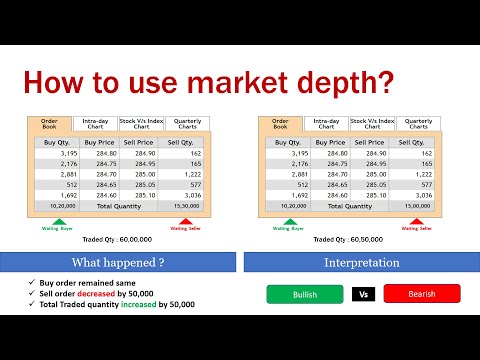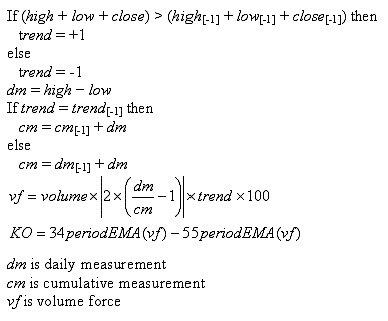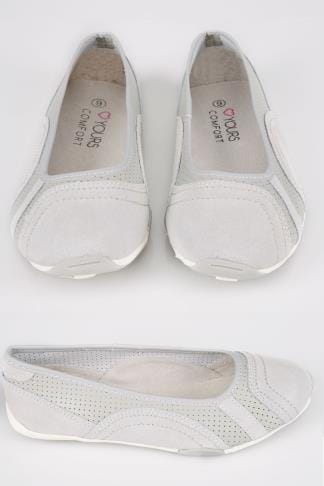Contents:


For example, with five-year property depreciated under the 200 percent declining balance method, you claim 20 percent in the first year and 32 percent in the second year, or over half of total depreciation in the first two years. Depreciable assets often are sold for more than their depreciated value . The amount by which the sale price exceeds the adjusted basis creates recaptured depreciation for the seller, which is subject to ordinary income tax, but not self-employment tax.
By allocating the cost of an asset over its useful life, businesses can better manage their finances and make more informed decisions about investments. While there are several methods of calculating depreciation, the most important thing is to choose a method that is appropriate for the business and provides accurate information. Second, depreciation allows businesses to match expenses with revenue.
Disposition of Depreciable Assets
Machinery and equipment can depreciate because their useful life is longer than most other assets. Ultimately, the expected service life of an asset should be established through a review of all available information and data points. This includes both manufacturer’s specifications and any external forces that could influence the performance or longevity of the asset. Careful consideration should be given to all of these factors before determining if the service life of an asset is greater than one year.
Real Estate Depreciation Strategies Relevant Legislation Updates – EisnerAmper
Real Estate Depreciation Strategies Relevant Legislation Updates.
Posted: Wed, 14 Dec 2022 08:00:00 GMT [source]
Of Tobacco & Tobacco ProductsIncludes assets used in the production of cigarettes, cigars, smoking and chewing tobacco, snuff, and other tobacco products. Of Grain & Grain Mill ProductsIncludes assets used in the production of flours, cereals, livestock feeds, and other grain and grain mill products. Business assets that deteriorate over time but last at least one year usually qualify for depreciation.
Make sure you have a amortization definition in place for tracking your use of equipment, and expect to write off a different amount every year. The double-declining balance depreciation method is an accelerated method that multiplies an asset’s value by a depreciation rate. Amortization is an accounting term that essentially depreciates intangible assets such as intellectual property or loan interest over time. Examples of depreciable property include machines, vehicles, buildings, computers, and more. The IRS defines depreciable property as an asset you or your business owns , you must use the property for your business or any income-generating activity, and, lastly, it must have a useful life that is greater than one year. First, it provides accurate information about the business’s actual costs.
Once organizations complete the sale of an asset, they must credit the sale proceeds to the asset account. The tools will begin depreciating once the business puts them in service, i.e., once they are available to the organization and ready for use. Let us look at an example to understand how businesses can record the disposal.
Types of Depreciation
Depreciation or amortization of a long-lived asset begins when the asset is available for its intended use. That is, depreciation or amortization begins when the asset is in the location and condition necessary for it to operate in the manner intended by management. Another example is a manufacturing plant that is used for producing goods. The plant has a useful life of 20 years, and the company can claim depreciation on the plant over the 20-year period.

It is referred to as a non-cash expense because the business gets a deduction for the life of the property with no additional cash outlay beyond the initial cost of the property. Depreciable business assets include most forms of property, including buildings, machinery, vehicles, furniture, and computers. You can also depreciate some forms ofintangible property like patents, copyrights, and computer software. If the company exchanges its used truck for a forklift, receives a $6,000 trade‐in allowance, and pays $20,000 for the forklift, the loss on exchange is still $4,000.
How do you determine if an asset has a service life that is longer than one year?
On the other hand, the sale of assets via a slump sale is subject to a short-term gain of 20%, provided the company has carried out operations for over three years. The reason behind this is that organizations are required to pay GST at a NIL rate on slump sales. In contrast, they are liable to pay taxes if they sell the business via the usual methods.
- The gain earned from the sale of such assets is subject to taxation at the lower capital gains tax rate against the rate applicable to ordinary income.
- In the second year, the same constant rate would be applied to the remaining balance and depreciation expense would be $16,000 (($100,000 – $20,000) × 20%)).
- The Sum of the years’ digits depreciation is a type of depreciation method used to calculate the value of an asset over its useful life.
- The principal machines involved are falsetwist, draw, beam-to-beam, and stuffer box texturing equipment and related highspeed twisters and winders.
- If you’re wondering what can be depreciated, you can depreciate most types of tangible property such as buildings, equipment vehicles, machinery and furniture.
The reason behind spreading https://1investing.in/s for the cost of property is to enable a business to be in a position to replace the property at the end of its life. With asset depreciation your business saves on taxes if you own property, equipment, vehicles, or fixtures that can be claimed with Section 179 deductions. Of Aerospace ProductsIncludes assets used in the manufacture and assembly of airborne vehicles and their component parts including hydraulic, pneumatic, electrical, and mechanical systems. Does not include assets used in the production of electronic airborne detection, guidance, control, radiation, computation, test, navigation, and communication equipment or the components thereof. Depreciable business assets are assets that have a lifespan and can be considered a business expense.
Recent discussions from accounting regulation settings have focused on ensuring businesses accurately calculate their depreciation expenses to maintain accurate financial records. Additionally, there has been discussion about increasing the useful life of certain assets to reduce the amount of depreciation expense taken each year. One common method is the five-year Modified Accelerated Cost Recovery System 200 percent declining balance option, which is allowed for new machinery.
That’s because assets provide a benefit to the company over a lengthy period of time. But the depreciation charges still reduce a company’s earnings, which is helpful for tax purposes. Overall, it is important for businesses to stay up to date with accounting regulations changes when calculating asset depreciation expenses. Doing so will help businesses maintain accurate financial records and comply with applicable laws and regulations. It is a method of depreciation that calculates the value of an asset based on its usage. This method is best for assets commonly used or consumed over time, such as vehicles, mining equipment, and manufacturing machinery.

Bonus depreciation can be used in conjunction with the Section 179 deduction. For vehicles, the dollar limit on bonus depreciation is $8,000 for the year they are placed in service . Information-based intangibles (e.g., business books and records, operating systems, list of advertisers). 85842.0Motor Transport-FreightIncludes assets used in the commercial and contract carrying of freight by road, except the transportation assets included in classes with the prefix 00.2.
If the tractor costs $135,000, the hourly depreciation over its useful life would be $9 per hour (135,000/15,000). Perhaps the simplest procedure for calculating depreciation is a straight line method; that is, assign an equal portion of the cost of the machine to each production period during which it will be used. For example, a machine that cost $75,000 and will be used for 6 production periods, would have a straight line annual depreciation of $12,500 (75,000/6). Below is a short video tutorial that goes through the four types of depreciation outlined in this guide. While the straight-line method is the most common, there are also many cases where accelerated methods are preferable, or where the method should be tied to usage, such as units of production. The units-of-production depreciation method depreciates assets based on the total number of hours used or the total number of units to be produced by using the asset, over its useful life.
We also reference original research from other reputable publishers where appropriate. You can learn more about the standards we follow in producing accurate, unbiased content in oureditorial policy. Adam Hayes, Ph.D., CFA, is a financial writer with 15+ years Wall Street experience as a derivatives trader. Besides his extensive derivative trading expertise, Adam is an expert in economics and behavioral finance.
This information is essential for making sound financial decisions and managing an organization’s finances effectively. In addition to providing information for financial reporting, depreciation can be used as a management tool. For example, by knowing the depreciation expense for an asset, a manager can compare that expense to the expected revenue from using the asset. If the revenue exceeds the depreciation expense, it may be time to sell or replace the asset. This systematic approach to spreading the cost of an asset over its estimated life helps businesses manage their assets and expenses more effectively. This article examines the types of assets that can depreciate and those that cannot and why they may or may not be eligible for depreciation.
A common method is to allocate depreciation expense based on the number of months the asset is owned in a year. For example, a company purchases an asset with a total cost of $58,000, a five-year useful life, and a salvage value of $10,000. However, the asset is purchased at the beginning of the fourth month of the fiscal year. The depreciation expense of the first year is $7,200 ($9,600 × 9/12). At times, it may appear that a finite-lived intangible asset’s economic benefits are consumed toward the latter part of the asset’s life. For example, a fixed-duration customer contract that is not likely to be renewed or extended may generate sales of increasingly larger quantities of a product through the expiration date of the contract.
- Depreciation of non-depreciable assets is prohibited and generally carries severe penalties.
- However, it does not include elevators or escalators, enlargement of the building, or changes in the internal structure of the building.
- Rent paid under a lease that closely resembles a purchase agreement is not deductible.
- For a four-year asset, multiply 25% (100% ÷ 4-year life) × 2, or 50%.
The number of years over which an asset is depreciated is determined by the asset’s estimated useful life, or how long the asset can be used. For example, the estimate useful life of a laptop computer is about five years. Businesses also create accounting depreciation schedules with tax benefits in mind because depreciation on assets is deductible as a business expense in accordance with IRS rules.

For example, allocate the cost of a tractor among the several crop enterprises and production periods in which the tractor is used on the basis of hours of use. Depreciation and amortization are similar in nature but have some important differences. First, amortization is typically only done using the straight-line method. Second, there is usually no salvage value for intangible assets because they are completely used up over their life span.
Depreciation recapture in the partnership context – The Tax Adviser
Depreciation recapture in the partnership context.
Posted: Mon, 01 Aug 2022 07:00:00 GMT [source]
This is the asset cost minus the residual value, divided by the number of functioning years. All depreciable assets are fixed assets but not all fixed assets are depreciable. For example, land is a non-depreciable fixed asset since its intrinsic value does not change. Examples of the classifications of assets used to record depreciable assets are buildings, computers and software, furniture and fixtures, land, machinery, and vehicles. One such rule, in effect from 2010 to 2013, allowed business owners to expense certain types of property in the first year of its useful life – up to a limit of $500,000. For 2018, changes to depreciation will take place, particularly tobonus depreciation.
